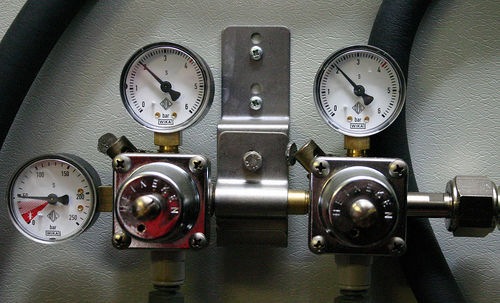
(image by deVos)
So, I’m a bit under pressure right now. I don’t blog too much because I’m bound to a immutable release date of 7th of January. If I don’t get the software out until 7th of January the customer will have to wait for another year before he can make the switch from his (pain in the ass) 15 year old MS-DOS software.
So you see I’m not only a little bit stressed, I’m looking forward to a Christmas holiday I’ll probably spend locked into some room finishing the software day and night.
As that deadline approaches, there are some things I have noticed in my current development that suddenly don’t seem fit any more due to time constraints.
I know my business layer needs a major refactoring (a day or so) to keep my domain logic “clean” of clutter. But I know I can’t spend a day refactoring something that has to ship next week (I want to have the app user tested by 7th). Still I can think before I code.
One thing I see in legacy code all the time is how people stop thinking once they approach deadlines, but start to just mindlessly copy/paste stuff to make it work somehow.
Here’s one principle you should NEVER forget:
DRY – don’t repeat yourself
Not repeating yourself through simple copy and paste will at least make it easy for you not to have to rewrite the whole thing once a change has to be made. I can retrofit extensive tests and good SoC, but I am doomed once I have to change the same piece of code throughout the whole application.
If I’m so stressed that I have to write crappy code, It’s still my duty to fix it sometime later, and that’s not possible if one business rule (it may be as simple as amount/numberOfRates) is done at 20 different places!
That then leads me to the next point, fixing stuff later requires at least some automated tests (nothing is worse than writing fixes that have more bugs in them).
Testing isn’t difficult, and it saves you more time than it takes. You may think you’re faster if you run the app once and see if it works, but apps don’t run as fast as unit tests, and once you have to run it several times to make it work you would have saved time by writing a unit test first. And although my tests look ugly and may be incomplete, I have verified that the most important calculations and interactions work (and can rerun those tests and verify that stuff still works later when I try to clean up the mess).
So, by applying (even incomplete) testing to my app, and not violating DRY I still retain the ability to easily extend and manipulate my application in the future. Once I’m done I can easily run NCover and find out what code I didn’t cover in my tests..

